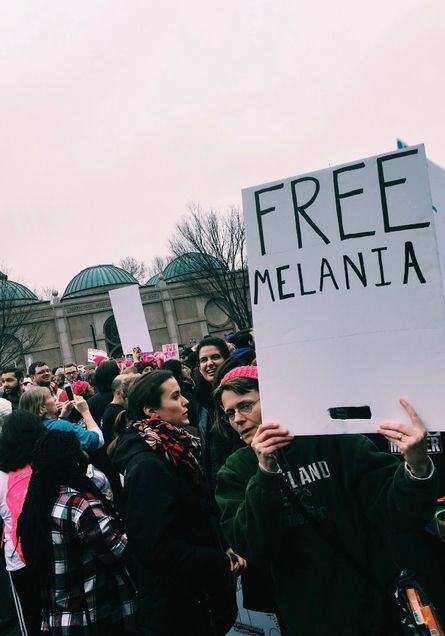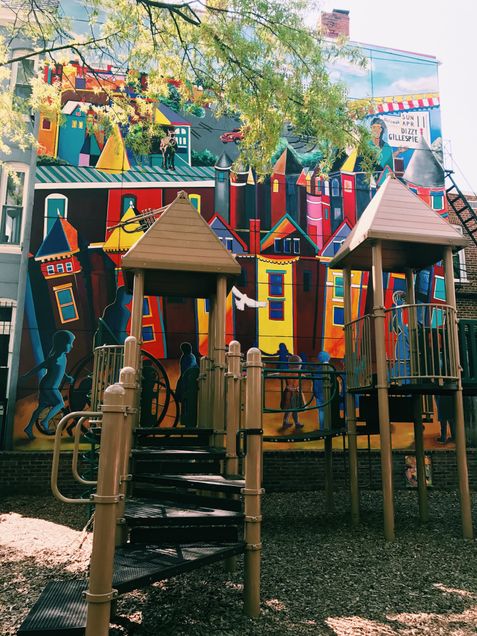Washington, DC: The Embodiment of Freedom of Speech and Expression
by Allie Roberts (Spring 2017)
When I began my semester in the BUDC program, I was a bit confused as to what was the “tale of two cities” to which my professors were referring. As far as I saw it, DC was a small enough city that there could not be that noticeable of a divide, regardless of the number of cultures that exist here. As time passed, however, I realized I was a bit mistaken; there truly are two cities, when one looks at it through the perspective of wealth. With a homeless population twice as large as the national average living side by side the expensive Georgetown residences, it is clear that these respective Washingtonians have very different experiences of their city. However, wealth is not the only differentiating factor; the city is home to countless different ethnic, religious and political groups who certainly do not always agree with one another. I wondered, based on this information, how such different factions of people were able to live in harmony in such a small space. Through my semester in Washington, I realized the answer to this question is that they do not. Although these groups coexist (for the most part) peacefully, they do not hesitate to voice their opinions and criticisms.

Crowd of Protesters at Women’s March on Washington
The first occasion where I witnessed these diverse narratives of DC residents being vocalized was at the women’s march back in January. Based on the name alone, I assumed that the march would largely consist of women who were attending for the same reasons that I was. When I arrived, however, I realized what a broad range of people were attending this event. From the very young to those older than my grandparents, the attendees of the march spanned a wide range of ages. Men attended as well as women, and the crowd was hardly homogenous when it came to race. Additionally, signs that the protesters held demonstrated that the reasons for their attendance varied as well. In light of the inauguration the previous day, many signs condemned our new president and vice president, whether it be for his stance on political issues, or some of his derogatory comments during the election. Other signs were less political and more positive; many advocated for race/gender equality, acceptance of sexual orientation, and environmentally practices. Even though each individual at the race had a unique narrative and thus marched for a different reason, the magnitude of the crowd size allowed for an overarching message of equality and tolerance.

Young Participant at the Women’s March on Washington
Aside from protests, another facet through which Washingtonians are able to express their diverse narratives is through art. For anyone who has visited or lived in this city, it is clear that art is everywhere. The number of museums is seemingly endless, and one can find all sorts of art (famous paintings, modern sculptures, etc). Much of the art in these museums communicates one side of Washington’s historical narrative: its emergence as the political hub of America, the key players who contributed to that growth, etc. This is the Washington that most of us have read about in our history classes. The other narrative of Washington’s history, however, is less so found in Smithsonians, and rather can be viewed on the walls of neighborhood buildings. By walking around the city on my own, as well as the neighborhood tour field trip, I have been able to see a different narrative of how DC came to be the city it is today. Neighborhoods such as U Street and Adams Morgan, though somewhat gentrified, still maintain their inherent characters.From a pocket of streets labeled “Little Ethiopia” to restaurants so authentically Latin American that you forget you are in the Mid-Atlantic, it is clear that these neighborhoods have their own distinct narrative of what Washington is to them. These neighborhoods consequently communicate these narratives through the street art their members create. The designs and portraits painted on the facades of buildings communicate the history and culture of each neighborhood, thus displaying its narrative.

Playground in Shaw, with street art in the background depicting the neighborhood’s view of the city
After spending nearly a full semester in DC, I realize there is a broader and more diverse history here than I had initially realized. Countless individuals’ narratives come together to form a multi-faceted city through the freeform art and countless protests that take place. The city is a fusion of race, socioeconomic status, and beliefs, but thanks to the channels through which individuals are able to self-express, one can learn much more about this city beyond its surface level.

Street art in Shaw seen on walking tour
Allie is a junior at the University of Notre Dame, studying economics and French. Currently she is interning at the Department of Justice for the Strategic Communications Department.

